Middleweight Sport-Touring Shootout - Caponord Vs Multistrada Vs Ninja
Traditional sport-touring takes on sport-adventure-touring
According to my weather app, it was officially 100 degrees at 10pm the night we rode in to Borrego Springs, CA, during our Middleweight Sport-Touring Shootout. I’m sitting poolside sipping a tasty, cold beverage while bossmen, Kevin Duke and Sean Alexander, discuss the finer points of gun control in the parking lot.
Thankfully, we’re not aboard those overweight rigs from our recent Heavyweight Sport-Touring Shootout; the wind protection from those two-wheel barn doors would have had us dead from heat exhaustion before reaching the bottom of Montezuma Grade. These three lighter, sportier, sport-tourers are much better suited to aggressive riding in hot climes. And although two bikes in this test are quasi sport-adventure-tourers, they’re still a heap load more fun in the tight stuff. Well, at least two of the three are.
Click here for the full gallery and specs
Aprilia’s recently launched Caponord and its bevy of electronic aids have garnered much attention – some good, some not so good. MO’s, Troy Siahaan wrote a very complimentary review of the Caponord following the bike’s press launch a few months ago. But now, in the harsh reality of judgement among its peers, the Caponord’s weak points become more apparent.
Aprilia Dynamic Damping, an unwisely chosen acronym of ADD – as in attention deficit disorder, by which we mean to say: “Hey, Aprilia suspension, quit yer daydreaming, I’m going fast now, would you please stiffen up.” But it pays no heed when ridden aggressively on bumpy roads, marshmallowing along, occasionally bottoming out and performing with a general sense of wallow.
“When ridden quickly in the twisties, the Aprilia starts sending nauseating warning messages early and often,” says Alexander. A statement to which Duke agrees, saying, “It feels less buttoned-down while cornering in the full-auto ADD mode than I’d like. In terms of front-end feedback and rider confidence at a fast pace, the uncertain-feeling Capo rates a distant third.”
In completely opposite land resides Ducati’s Skyhook suspension. The Touring S manages composure whether you’re riding slow and vertical or fast and leaned – automatically tightening and loosening damping settings depending on conditions and riding modes.
“The Multi’s stiffness and rigidity stands in sharp contrast to the Caponord’s plushness, whether referring to the suspension, chassis, seat or the way it makes your private parts feel,” quips Duke.
One of the biggest differences between the Ducati’s semi-active Skyhook suspension and the Caponord’s active/semi-active ADD is the Aprilia’s ability to automatically adjust the preload of its shock. There exists numerous other ways in which the two systems differ, and the ADD may be more advanced in its functionality compared to Ducati’s Skyhook, but whether due to overly soft springs, incorrect damping settings or a combination thereof, we believe Aprilia needs to better refine its ADD system.
“I had a scare while running deep into a bumpy, downhill corner with ADD set in its full-auto mode,” says Duke. “The system seemed to dial up an excess of front compression damping in an attempt to keep the chassis level, causing a front-end chatter that unexpectedly released grip from the front tire.”
Then there’s Kawasaki’s Ninja 1000 and its manually adjustable suspension (lacking only rear compression-damping adjustment), which seems passe next to the active Italian dampers. However, it works better and with more consistency than the Caponord’s fancy-schmancy ADD. No complaints were logged regarding the Ninja’s suspenders, and it came in a comfortable second in the suspension category of the ScoreCard, which also contributed to the Ninja winning the handling category of the ScoreCard despite feeling a little less nimble than the Italian duo.
“While the Ninja shares a 190mm rear tire width with the Multistrada, the Kawi uses the now-antiquated 50-series profile instead of the Duc’s modern 190/55 size,” says Duke. “This contributes greatly to the Kawi’s relatively sluggish steering response. And yet the Ninja does a nice job at unwinding a twisty road, aided by a wheelbase (56.9 inches) at least three inches shorter than the rangy Italians.”
Even without the massive amounts of leverage provided by the two sport-adventure-tourer’s wide handlebars, a rider can choose exactly where he wants to put the Kawi at any given time, in any given corner. The Ninja remains stable in long sweepers and outperforms its taller, adventurish rivals in higher-speed environments.
The Kawi’s engine is also worthy of mention as it handily out-gunned both the Duc and Capo in top-gear roll-ons, even though its down a few hp and ft-lbs to the Multistrada.
“Even though it isn’t as torquey as the Multistrada, the Ninja 1000 easily and decisively walks-away from both the Aprilia and Ducati in any contest of acceleration,” says Alexander.
Considering the two Italians share engine architecture, the Twin in each exhibits astoundingly different characteristics. Where the Testastretta 11° L-Twin launches from a standing start with gobs of low-end grunt, the majority of the Aprilia’s power resides high in the rev range of its 90-degree Twin. The Capo also suffers from a surprisingly glitchy EFI and R-b-W.
+ Highs
- Least expensive
- Sportbike with bags
- Roll-on champ
– Sighs
- Relatively tight legroom
- Expensive bags and no center stand
- Outdated rear tire size
“The R-b-W tuning feels a little unnatural,” says Duke. “Throttle response feels linear over the first 70% of twisting its grip, but its full corral of horses is unleashed only after twisting it further along its lengthy rotation. There’s also a surging condition at small throttle openings.”
But, for those less inclined to ride at higher speeds and steeper lean angles, the softer Caponord could be the better choice as the only model here with cruise control (albeit a rudimentary system) and the greatest amount of wind protection. The Aprilia was also best outfitted for the passenger accommodations.
“The passenger seat is narrower than the Duc’s, but reasonably thick padding is accommodating to a posterior,” says Duke. “A raised forward end of the saddle inhibits sliding forward during braking. The top case includes a backrest pad, which greatly adds to a feeling of security for passengers.”
+ Highs
- Super sporty
- Open ergos
- Thrilling engine
– Sighs
- Price
- Lofty seat height
- Gearbox imprecision
For the rider, the two sport-adventurers, with their relaxed rider triangles, longer wheelbases and lengthy suspension travel, have an unfair advantage over the Ninja. But for a traditional sport-tourer packing the performance the Ninja does, it’s a relatively comfortable mount upon which to spend the day. “Its bars and ergonomic triangle fall roughly halfway between a real supersport and a traditional sport-tourer,” says Alexander.
At 32.3 inches the Ninja has the lowest seat height by nearly an inch compared to the Capo and more than an inch on the Ducati. It’s narrow passenger seat, however, offers the least amount of pillion comfort of the three.
+ Highs
- Best comfort
- Two-up champ
- Strong value
– Sighs
- Too squishy
- Too heavy
- ADD needs further development
By virtue of its 40-liter top case ($399.95 option) the Aprilia easily provides the greatest amount of storage capacity: 98 liters total vs. the Duc’s 58 liters vs. the Ninja’s 56 liters, according to each manufacturer’s claims. While the Capo’s top case will fit a full-face helmet, its saddlebags will not, whereas either of the Ninja’s saddlebags will swallow a full-face. A helmet will fit the Multi’s left bag, but the right bag will not due to the cut-out for exhaust heat which drastically reduces the bag’s capacity.
As noted in our initial review of the Ninja 1000, the bike’s hard saddlebag kit lists for $1,269.75. There’s also a choice of a 39-liter top case ($139.95), but due to different mounting hardware, the saddlebags and top case cannot be attached simultaneously. If more carrying capacity is needed, there’s a wide selection of soft luggage available from Kawasaki specifically designed for the Ninja 1000.
In the end, it turned out that all the technology couldn’t keep the Duc or the Capo in front of the Kawasaki on the ScoreCard. Factoring in the objective scores of price and weight, the more analog bike has enough of an advantage to claim victory over the pricey Multistrada, the bike that each editor scored as the subjective winner.
The Caponord, while a fantastic bargain considering its arsenal of electronics and the only bike here with cruise control, couldn’t overcome the shortcomings of its ADD suspension system, unrefined EFI and R-b-W, and it’s quirky handling manners. You have the option of choosing the non-ADD mode such as solo rider, solo rider with luggage, two-up and two-up with luggage, and Aprilia says that for fast canyon riding the stiffest setting (two-up with luggage) is the preferred choice. However, we tried that and didn’t notice a significant improvement in suspension performance.
“What a shame,” says Alexander. “That squishy electronic suspension costs significant dough, raising the Caponord’s base MSRP. If our test bike was available with old-school twisty-knob adjusters, it would quite likely make a fantastic sport-touring motorcycle and might have been priced near to the saddlebag-equipped Ninja.”
The Ninja isn’t perfect, exhibiting a high-frequency buzz in the upper rev-range in various gears (thankfully not at freeway cruising speeds), but the way in which it goes about its duties without the influence of electronic suspension for a far more attainable price tag makes it the winner of this shootout.
Alexander relates; “At the end of our first day’s ride it was time for one last rotation before making the final slog to our arid desert hotel. I thought it was my turn on the Kawasaki and I began to quietly fret… until I realized it was actually my turn on the Aprilia. Near the end of that last leg of our route we followed S-22 down almost 4,000 feet of elevation via a sublime series of high-speed sweepers before dropping us into the furnace of Borrego Springs. In hindsight, I would have chosen the Kawasaki’s relatively cramped ergonomics in exchange for its superior ground clearance, suspension composure, and thrust during the ride down those last few miles.”
2014 Middleweight Sport-Touring Shootout Scorecard | |||
|---|---|---|---|
| Category | Aprilia Caponord 1200 ABS Travel Pack | Ducati Multistrada 1200 S Touring | Kawasaki Ninja 1000 |
| Price | 67.5% | 0.0% | 100.0% |
| Weight | 60.0% | 95.0% | 100.0% |
| Engine | 83.3% | 92.1% | 90.8% |
| Transmission/Clutch | 89.2% | 71.7% | 91.7% |
| Handling | 68.3% | 87.5% | 91.7% |
| Brakes | 81.7% | 95.0% | 87.5% |
| Suspension | 53.3% | 96.7% | 87.5% |
| Technologies | 89.2% | 90.0% | 70.0% |
| Instruments | 76.7% | 72.5% | 86.7% |
| Ergonomics/Comfort | 91.7% | 85.0% | 75.8% |
| Luggage/Storage | 89.2% | 78.3% | 85.0% |
| Appearance | 79.2% | 90.8% | 88.3% |
| Cool Factor | 76.7% | 90.8% | 81.7% |
| Grin Factor | 60.0% | 92.5% | 81.7% |
| Overall Score | 77.9% | 85.4% | 86.0% |
| Price and weight are scored based on objective metrics. Other scores are listed as a percentage of editors’ ratings in each category. The Engine category is double-weighted, so the Overall Score is not a total of the displayed percentages but, rather, a percentage of the weighted aggregate raw score. | |||
2014 Middleweight Sport-Touring Shootout Specs | |||
|---|---|---|---|
| Aprilia Caponord 1200 ABS Travel Pack | Ducati Multistrada S Touring | Kawasaki Ninja 1000 | |
| MSRP | $15,499 ($16,098.90 as tested) | $19,995.00 | $13,268 ($14,538 as tested) |
| Engine Capacity | 1197cc | 1198.4cc | 1043cc |
| Engine Type | Liquid-cooled 60-degree DOHC V-Twin, four valves per cylinder, chain driven cams | Liquid-cooled DOHC L-Twin, four valves per cylinder, desmodromic valve actuation | Liquid-cooled DOHC inline-four, four valves per cylinder, chain driven cams |
| Bore x Stroke | 106.0 x 67.8mm | 106.0 x 67.9mm | 77.0 x 56.0 mm |
| Compression Ratio | 12.0:1 | 11.5:1 | 11.8:1 |
| Fuel System | Injection with two injectors per cylinder and Ride by Wire throttle control with three maps: Sport (S), Touring (T), Rain ® | Electronic fuel injection, elliptical throttle bodies | DFI with four 38mm Keihin throttle bodies, oval sub-throttles |
| Ignition | Integrated engine management system | Digital | TCBI with digital advance |
| Valve Train | DOHC, 8 valves | DOHC, 8 valves | DOHC, 16 valves |
| Transmission | 6-speed, helical gears | 6-speed | 6-speed |
| Final Drive | Chain | Chain | Chain |
| Front Suspension | Fully adjustable Sachs 43 mm inverted fork. Rebound and compression electronically managed with ADD (Aprilia Dynamic Damping) | 48mm fully adjustable usd forks. Electronic compression & rebound damping adjustment with Ducati Skyhook Suspension | 41 mm inverted cartridge fork with stepless compression and rebound damping, adjustable spring preload / 4.7 in. |
| Rear Suspension | Aluminium alloy swingarm, Sachs dynamic rear monoshock absorber. Adjustable or automatic setting for spring preload coupled with electronically controlled rebound and compression damping via ADD (Aprilia Dynamic Damping) | Electronic compression & rebound damping adjustment. Electronic spring pre-load adjustment with DSS Aluminium single-sided swingarm. | Horizontal monoshock with stepless rebound damping, remotely adjustable spring preload / 5.4 in. |
| Front Brake | Dual 320mm discs, Brembo M432 4-piston calipers, ABS | Dual 320mm discs, radial-mount Brembo 4-piston calipers, ABS | Dual 300mm petal-type rotors with radial-mount four-piston monobloc calipers and ABS |
| Rear Brake | 240mm disc, Brembo 1-piston caliper, ABS | 245mm petal disc with ABS, 2-piston caliper | Single 250mm petal-type rotor with single-piston caliper, with ABS |
| Front Tire | 120/70 ZR17 | 120/70 ZR17 | 120/70 ZR17 |
| Rear Tire | 180/55 ZR 17 | 190/55 ZR17 | 190/50 ZR17 |
| Seat Height | 33.0 in. | 33.5 in. | 32.3 in. |
| Wheelbase | 61.7 in. | 60.2 in. | 56.9 in. |
| Rake/Trail | 26.1º/5.0 in. | 25°/4.3 in. | 24.5 deg / 4.0 in. |
| Curb Weight | 599 lb. | 543 lb. | 532 lbs. |
| Fuel Capacity | 6.3 gal. | 5.3 gal. | 5.0 gal. |
| Observed fuel mileage | 33.2 | 40.6 | 38.2 |
| Storage Capacity | 29L each | 58 liter | 28L each |
| Accessories | ABS, aprilia Traction Control (aTC), Aprilia Dynamic Damping (aDD), aprilia Cruise Control (aCC), central stand, painted side bags (29 + 29 lt), Full LCD instrument pannel, Adjustable windshield, Hand Guards. 40L Top Box ($399.95), Heated grips ($199.95) | (Standard equipment) DSS Ducati Skyhook Suspension,DSP Ducati Safety Pack ( ABS 9ME + DTC),Riding modes, Power modes, RbW, 58 litre side luggage, heated grips and centre stand. | None |
| Available Colors | White, Red | Red | Candy Lime Green, Candy Cascade Blue |
| Warranty | 24 months, unlimited mileage | 24 months, unlimited mileage | 12 months |
A former Motorcycle.com staffer who has gone on to greener pastures, Tom Roderick still can't get the motorcycle bug out of his system. And honestly, we still miss having him around. Tom is now a regular freelance writer and tester for Motorcycle.com when his schedule allows, and his experience, riding ability, writing talent, and quick wit are still a joy to have – even if we don't get to experience it as much as we used to.
More by Tom Roderick



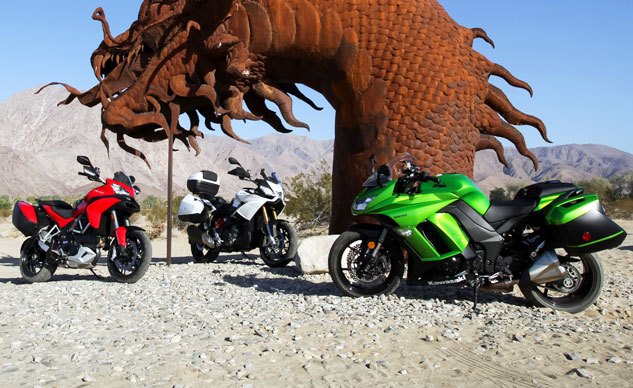
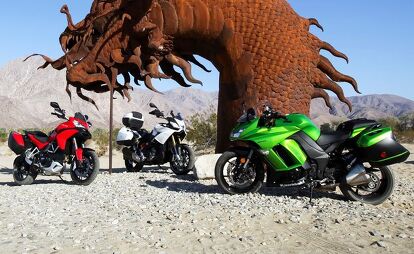







































































































































































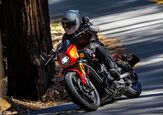
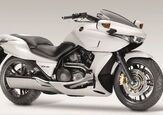
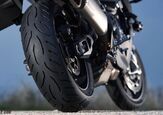
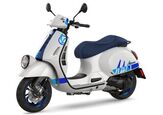
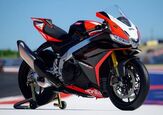
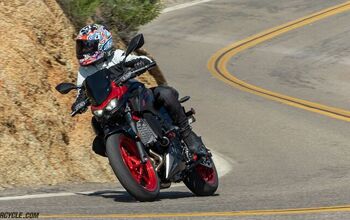
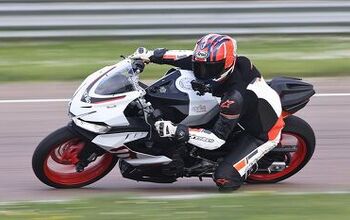

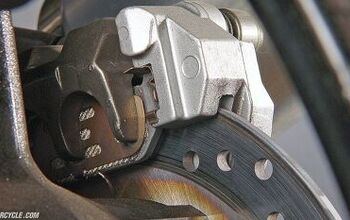
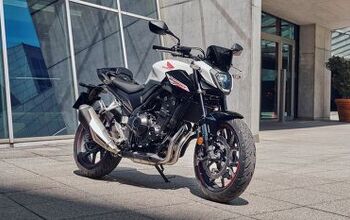
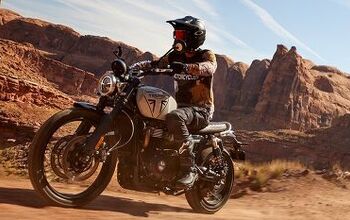
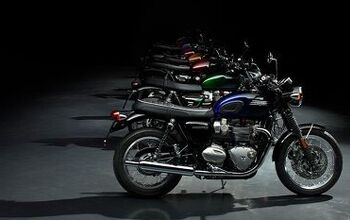
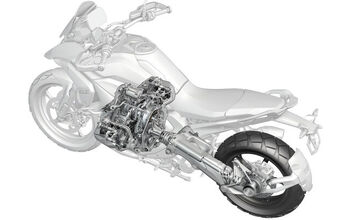
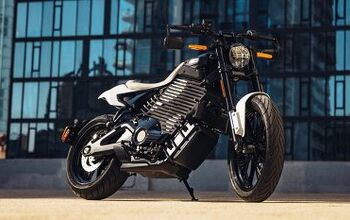
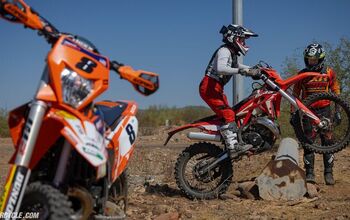
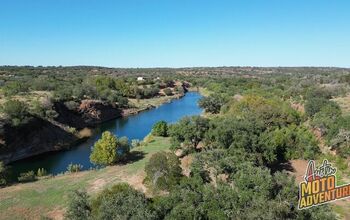
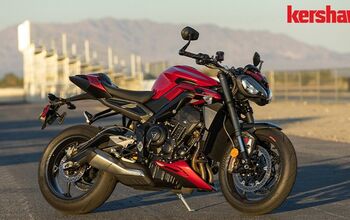

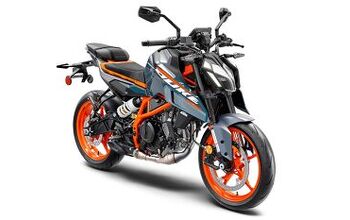
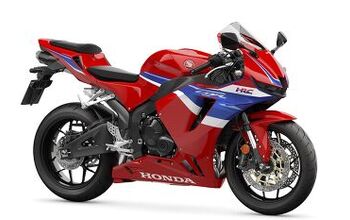
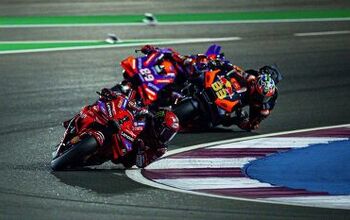
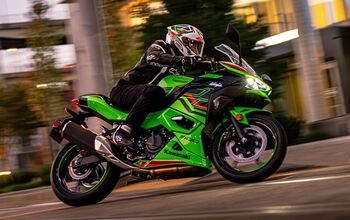
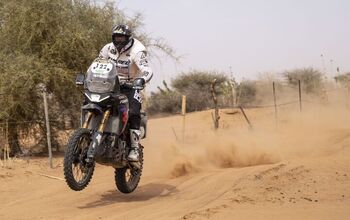
Comments
Join the conversation
Yes, congratulations... Comparing the twins to the kawasaki makes total sense (in MO world). The Vstrom 1000 would have been dissonant here, being a twin, chain driven. The KTM also would have looked out of place. Next time include a Vespa, to be consistent with this approach.
Very fun review:) A shame you didn't have the VFR.
I rode these bikes and it was a tough choice between the VFR and the Kawi:
Kawi:
+way more power, better electronics, less expensive, green!
-buzzy, high insurance, kind weird looking
VFR:
+much nicer finishing, more agile, better dealer, equipment (centerstand, heated grips etc)
-no slipper clutch
* not sure if I like the VTEC. sometimes it's cool sometimes not.
I chose the VFR cuz I like its personality: Sexy Librarian.
I'll be interested in what you have to say on the matter.